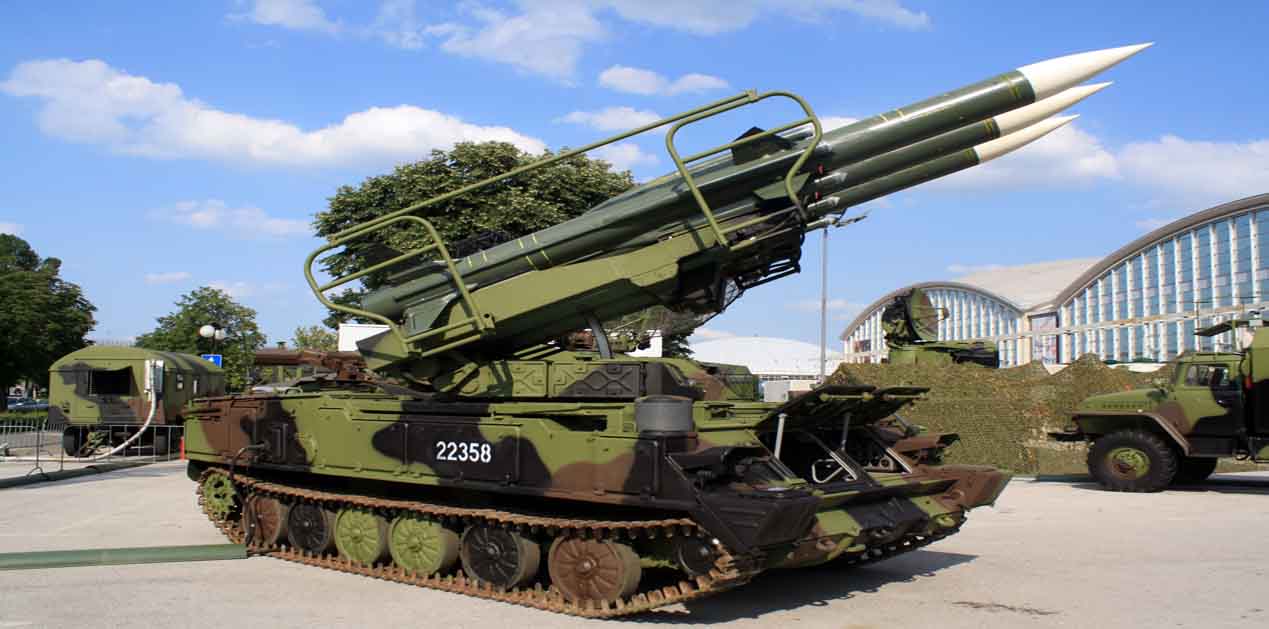Gun Systems
No country the word over ever throws away its old calibres (implying gun systems). Russia is still going strong with its 57 mm, 85 mm air defence guns (besides the newer vintage of 23 mm and 30 mm). Sweden, Italy, and Singapore with their 40mm, Germany, Greece, US and French with their 20 mm, 30 mm and 35 mm. The name of the game is keeping the guns alive through ‘continuous qualitative up-grade’. And why this happens is because ‘this is the only way out’ as throwing away of calibres is simply not possible.
Qualitative up-grade of guns manifests in multiple domains - ordnance, superstructure, laying and target tracking systems, enhancement in range and reach parameters, hours of operability and so on. In effect, if qualitative up-grade keeps taking place in pace with the growth of technology, the mainframe weapon system is nearly ageless, unless a quantum jump produces a 'new chapter technology', something of a Revolution in Military Affairs (RMA) kind.
In the above context, the up-grade of the mainstay air defence gun systems, namely the L-70 and ZU23 guns and the Schilka Weapon System is suitable for tangible quality enhancement by the addition of Electro-Optical Fire Control System (EOFCS, complete with its day camera, night camera, laser range finder and fire control computer), besides enhancement in drives and power banks.
There are multiple challenges in the said upgrade:-
Firstly, the Bharat Electronics Ltd (BEL), the up-grading agency (that is, the Original Equipment Manufacturer or OEM) has to ensure that the initial delays that took place in attending to the teething trouble period are made up by enhanced throughput, as getting upgraded numbers in time-critical sequence is to be planned carefully to avoid impact on net operational effectiveness. The OEM must also remember that the proof of upgrade will be in live firing and nothing short of that.
In case of Schilka upgrade, there must not be any perpetual dependency on the foreign OEM with whom the BEL had joint ventured for software and technology support. This can only happen if the continuous system support is taken over by BEL engineers by coming out of their comfort zone of dependence on Foreign OEM. Experience has it that it is possible now, and it is happening. Just the momentum is needed to keep up. The challenge for the maintaining agency is to make sure that all the past and ongoing issues in overhaul of the un-upgraded guns is speeded up with adequate spare support from BEL before each gun is sent for upgrade. Irrespective of any amount of delays and hurdles, the pending upgrade of ZU 23 guns is inescapable if we want to avoid a situation when the guns go ineffective before the successor gun arrives. This upgrade must start post haste.
But any amount of upgrade of the existing guns cannot wipe away the crying need for successors guns, the induction of which is over-delayed. The current instance, riding on the vehicle of 'Buy and Make Indian' is a litmus test that will give a great boost to our private defence industry. Meanwhile, case for inducting successor systems has to be pushed forward as a matter of operational expediency.
Missile Systems
Multiple challenges exist in the field of Surface to Air Missiles (SAMs). To begin with, the man portable shoulder/pedestal fired missiles grouped under the generic category of Very Short Range Air Defence Systems or VSHORADS are an urgent need. These are not only required to provide the required gun-missile mix at the terminal end of the point defence deployments, something that is a must to counter the current and future air threat, but these are also required to provide the flexibility and enhancement in range and reach besides a degree of surprise and innovation in the otherwise predictable patterns of deployment. Such weapons are also a must for opportunity targets like the unmanned aerial systems or UAS. The challenge for the users and the decision makers is to take the ongoing case forward which has already taken several years to mature to this level. Closure of the current case and restart will be prohibitive in time and cost terms.
In the field of Short Range SAMs (SRSAM), while the Akash is a success story. The challenge for the OEMs is to ensure the realisation of weapon system as full-fledged regiments gets on the top gear by cutting out delays in delivery schedules and spare support. It has to be understood that the requirement of SRSAM is critical to provide Short Range Missile cover to strategic vulnerabilities.
Apart from the SRSAMs, there is another challenge of providing mobile missile cover to mechanised formations through Quick Reaction SAMs (QRSAMs). Such weapons are distinct in their own right. They can keep up with mechanised assets and have the unique capability of surveillance and tracking during move and firing immediately on halt. It is heartening to note from the open source the progress of indigenous QRSAM by Defence Research and Development Organisation (DRDO) and BEL. The challenge is to take this progress to its fruitful realisation with full involvement and participation of the user and fill the existing void in the QRSAM category for the field force.
In the case of Medium Range SAMs (MRSAMs) while the open source informs us about the contract for the first Regiment having been signed with the DRDO (in Joint venture with Israeli Armament Industry or IAI), the challenge for all stake holders is to move forward towards realisation of the system and its early operationalisation. Learning from Akash, the users and OEM must not only to look at the weapon vertical alone, but also the associated structures of missile sheds for holding , preparation and testing. The latter must come up alongside lest it holds up induction of the main weapon at a later date.
Surveillance and Battle Management Systems
As regards a whole hierarchy of surveillance and fire control (FC) systems, it is reassuring to see that the indigenous capability of DRDO as represented through Electronic and Radar Development Organisation (LRDE) along with BEL as the Production Agency (PA) coming up reasonably well. The recent inductions of 3-Dimensional Tactical Control Radar (3-DTCR) and Low Level Light Weight Radar (LLLR), and the ongoing development of the state-of-the-art radars (FC Radar, ADFCR and Tactical Control Radar, ADTCR) point to this deduction. The challenge for these organisations is to ensure that, one, there is total synergy between them, and two, the user is kept on board all the way. Besides this, the challenge for the developers is to put all out efforts to ensure that the mutually agreed completion dates (PDCs) for under development multiple type of radars are not allowed to slip away . In fact the ultimate aim should be to get rid of foreign dependence in this field. While that should be the ultimate goal, the challenge to maintain the current inventory of FC and TC radars must not be lost sight of either by BEL or LRDE. This will demand continuous hand-holding and spare support to the user.
As regards the Battle Management Systems, the challenges are the gravest of all. Most of these lie in the domain of the indigenous developer of the system, i,e BEL as well as the user. The user must ensure that the semi-automated Battle Management Command and Control (BMC2) System (also referred to as Air Defence Control and Reporting System or ADCRS) moves beyond its test bed stage by getting its technical and obsolescence issues addressed. In this we need to go beyond the narrow confines of the inter-Service turfs and try to seamlessly integrate the ADCRS across the Service domains. In specific terms, a seamless handshake of systems is a must between the Army, Navy and Airforce.
To achieve the above, HQ Integrated Defence Staff (IDS) needs to intervene and lay down time bound deadlines while the OEM, along with the three Services stake holders, have to ensure that the technological and software support required for achieving the above handshake is put into place, sooner than later.
Addressing UAS Threat
Proliferation of unmanned aircraft system (UAS) as attack vehicles into our scenario had happened at an exponential pace. While the UAS are an ‘attacker’s delight’ they are a defender’s nightmare. This is so because not only detecting these vehicles is an uphill task due to their minimalistic Radar Cross-section Signatures (RCS), but also the challenge is to develop low cost weapons to kill them which would balance out the ‘cost of kill’ with the ‘cost of target’. Launching million of dollars worth of missiles to bring down low cost UAS does not make sense.
In this context, the challenge for DRD, duly supported by the public and private industry, is to come forward and develop low cost anti-UAS systems both in the hit-to-kill domain, as well as in the soft-kill domain. The ongoing work in this field needs to be expedited and taken to its fruitful conclusion.
Thus goes the challenge count for Army Air Defence. It is hoped that these challenges will continue to be addressed with full vigour in times to come.
Image Source: http://www.wikiwand.com/en/2K12_Kub










Post new comment